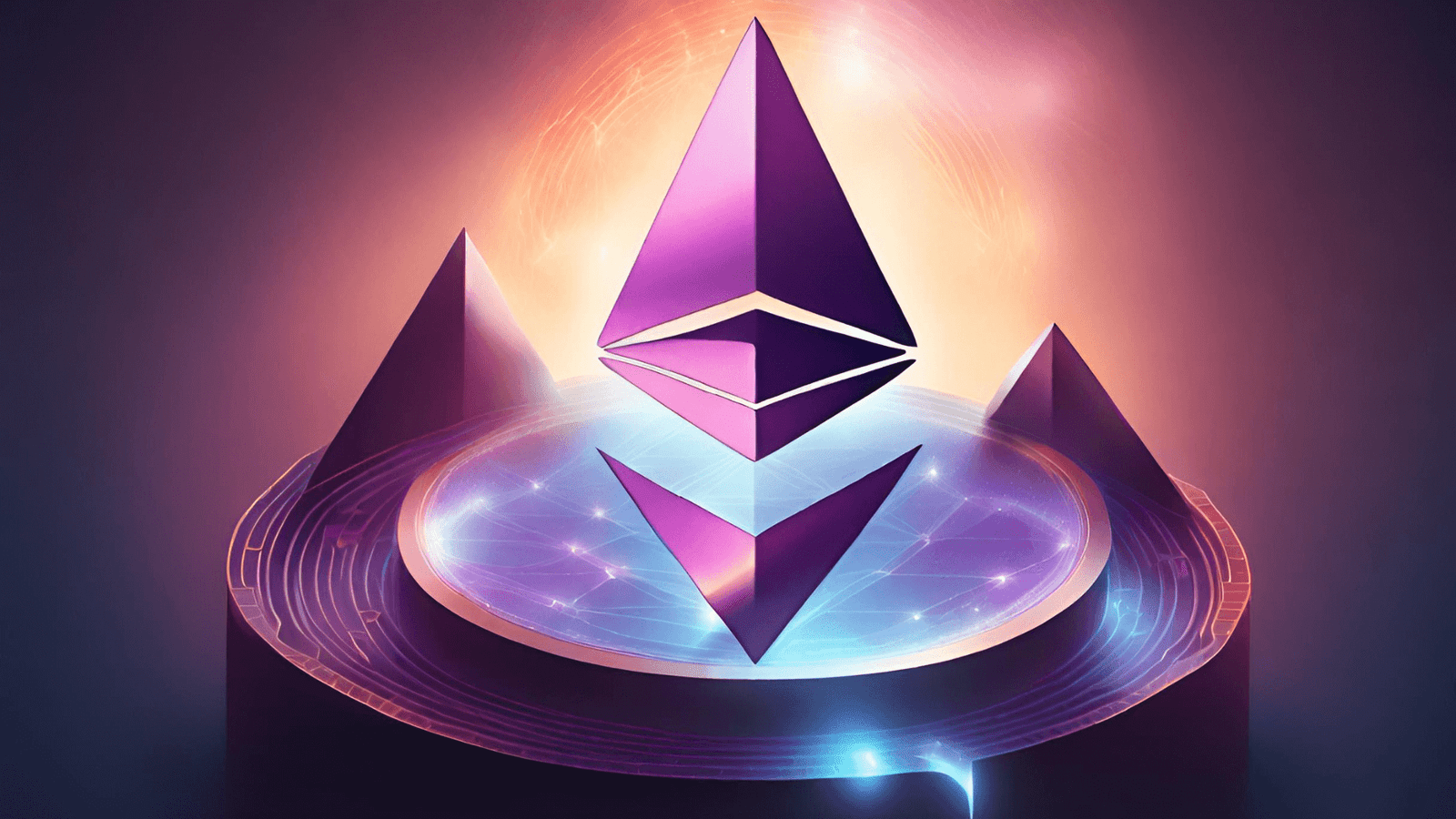How Does Ethereum Work? | A Comprehensive Guide

How Does Ethereum Work?
A. An overview of the purpose of Ethereum
Ethereum is a decentralized platform that allows the creation and execution of smart contracts and decentralized applications (DApps). Unlike traditional centralized systems, Ethereum allows individuals and organizations to interact directly without intermediaries, promoting transparency, security and efficiency.
B. The origins of Ethereum
The idea behind Ethereum was conceived by Vitalik Buterin, a renowned programmer and cryptocurrency enthusiast. In late 2013, Buterin published the Ethereum White Paper, which outlines the vision for a platform that goes beyond Bitcoin’s capabilities by incorporating programmable smart contracts. The Ethereum project gained a lot of attention and support, leading to its official launch in July 2015.
C. Key differences between Ethereum and Bitcoin
While both Ethereum and Bitcoin rely on blockchain technology, they serve different purposes. Bitcoin primarily functions as a digital currency, with the goal of replacing traditional financial systems. On the other hand, Ethereum provides a decentralized platform for running applications, with its native currency, Ether (ETH), serving as fuel to execute transactions and implement smart contracts.
D. Advantages and potential applications of Ethereum
One of the main advantages of Ethereum is its ability to facilitate the creation of decentralized applications and smart contracts. This opens up numerous opportunities in various industries, including finance, supply chain management, voting systems, and even gaming. By eliminating middlemen and reducing costs, Ethereum can revolutionize the way transactions and agreements are carried out.
### E. Potential challenges and limitations of Ethereum
Despite its potential, Ethereum faces some challenges and limitations. Scalability is a major concern, as the network’s current architecture limits the number of transactions it can handle per second. Additionally, the need for developers to understand Ethereum’s unique programming language, Solidity, may be a barrier to entry for some. Finally, as with any emerging technology, regulatory and legal considerations are still being defined that may impact the widespread adoption of Ethereum.
II. Ethereum's Architecture

A. The Ethereum Virtual Machine (EVM)
1. What is the EVM and How Does it Function?
The Ethereum Virtual Machine (EVM) is the runtime environment where smart contracts are executed. It is a decentralized, Turing-complete virtual machine that runs on every node in the Ethereum network. The EVM allows for the execution of complex computations and the storage and manipulation of data in a secure and deterministic manner.
2. Understanding the EVM’s Role in Smart Contracts Execution
Smart contracts, written in Solidity, are compiled into bytecode, a machine-readable format understood by the EVM. When a user wants to interact with a smart contract, the EVM executes the bytecode, running the code and updating the state of the contract on the blockchain. This allows for trustless and automated execution of agreements without relying on a centralized authority.
3. Exploring the EVM’s Execution Environment
The EVM operates in a sandboxed environment, ensuring that smart contracts cannot access or interfere with the underlying infrastructure. It provides a set of predefined operations and an account model for managing ether balances and transactions. The EVM’s execution is backed by Ethereum nodes, which collectively form the decentralized network responsible for validating and executing smart contracts.
B. Ethereum’s Blockchain
1. Overview of Ethereum’s Blockchain Structure
Ethereum’s blockchain consists of a series of blocks, each containing a list of transactions and smart contracts. These blocks are interconnected and secured through cryptographic algorithms, creating an immutable and transparent ledger. The blockchain is continuously maintained and updated by the network’s nodes.
2. The Role of Consensus Mechanisms in Ethereum
Consensus mechanisms, such as Proof-of-Work (PoW) and the upcoming Proof-of-Stake (PoS), ensure agreement among network participants regarding the validity of transactions and the order in which they are added to the blockchain. PoW, currently used in Ethereum, requires miners to solve complex mathematical problems to validate transactions. PoS, on the other hand, allows validators to create new blocks based on the amount of cryptocurrency they hold and are willing to “stake.”
3. Analyzing Ethereum’s Mining Process and Rewards System
Mining in Ethereum involves validating transactions by solving computational puzzles and adding new blocks to the blockchain. Miners compete to find the correct solution, with the first miner to solve the puzzle receiving rewards in the form of newly minted Ether and transaction fees. This process not only secures the network but also incentivizes participation and ensures the integrity of the blockchain.
C. The Role of Gas in Ethereum
1. Introduction to Gas and Its Purpose in Ethereum
Gas is a fundamental concept in Ethereum and serves as a unit for measuring computational work. It represents the cost required to execute transactions and smart contracts on the network. Gas is used to allocate resources and prevent malicious participants from spamming or congesting the network.
2. Gas Costs: How Prices Impact Transactions and Smart Contracts
Every operation within Ethereum consumes a specific amount of gas, with more complex operations requiring higher gas costs. Gas costs are determined by market demand and supply, as users bid on how much they are willing to pay for gas. Higher gas prices incentivize miners to prioritize transactions and smart contracts with higher fees.
3. Optimizing Gas Usage and Transaction Efficiency
Users can optimize gas usage by writing efficient and well-optimized smart contracts. This includes minimizing storage, reducing unnecessary computations, and utilizing design patterns that save gas. Choosing the right gas price is also crucial, as setting it too low might result in delayed or rejected transactions, while setting it too high can lead to unnecessary expenses.
D. Ethereum’s Tokens and Cryptocurrency
1. Understanding Ethereum’s Native Token: Ether \(ETH\)
Ether (ETH) is the native cryptocurrency of the Ethereum platform. It serves multiple purposes within the ecosystem, including paying for transaction fees, incentivizing miners, and being used as a medium of exchange for decentralized applications and services. Ether has gained significant popularity and market value since its inception.
2. Different Types of Tokens on the Ethereum Network
In addition to Ether, Ethereum supports the creation and operation of various types of tokens. These tokens can represent digital assets, fungible or non-fungible assets, governance rights, or even membership to specific communities. Examples of popular token standards include ERC-20, ERC-721, and ERC-1155, each serving different purposes and use cases.
3. Exploring the Role of Tokens in Decentralized Applications \(DApps\)
Tokens play a crucial role in the functioning of decentralized applications (DApps) built on top of Ethereum. They enable developers to create unique ecosystems, incentivize user participation, and facilitate the exchange of goods and services within these applications. Tokens can also act as a representation of value for crowdfunding projects or community initiatives.
E. Ethereum Improvement Proposals (EIPs) and Upgrades
1. Overview of EIPs: Enhancements and Changes to Ethereum
Ethereum Improvement Proposals (EIPs) are formal documents that propose changes, improvements, or additions to the Ethereum network. They are the primary means for discussing and implementing protocol upgrades. EIPs cover a wide range of topics, including technical specifications, standards, and economic changes.
2. Notable Upgrades: From Frontier to Serenity
Since its launch, Ethereum has undergone several major upgrades. The most notable include the transition from the Frontier network, which was the initial release, to Homestead, Metropolis, and now the upcoming Serenity phase. Each upgrade introduces significant improvements in terms of scalability, security, and consensus mechanisms.
3. Upcoming EIPs and the Roadmap for Ethereum’s Future
Ethereum’s development community continues to propose and discuss new EIPs that aim to address existing challenges and further enhance the platform’s capabilities. Upcoming upgrades, such as Ethereum 2.0, will introduce Ethereum’s transition from Proof-of-Work to Proof-of-Stake, significantly improving scalability and energy efficiency.
III. Smart Contracts and Decentralized Applications (DApps)

A. Introduction to smart contracts
1. Definition of smart contracts and their purpose
Smart contracts are self-executing contracts with the terms of the agreement written directly in code. They automatically execute and enforce agreed conditions without the need for intermediaries. Smart contracts provide transparency, immutability, and efficiency in various fields such as finance, supply chain management, and decentralized finance.
2. Key Features of Smart Contracts on Ethereum
Smart contracts on Ethereum have several key features that distinguish them from traditional contracts. They are immutable, meaning their code cannot be modified once deployed. They are also transparent, since all interactions with the contract and its state are publicly visible on the blockchain. Additionally, smart contracts are self-executing and rely on predefined rules and logic to automate their execution.
3. Use cases and benefits of smart contracts
Smart contracts have a wide range of use cases. In finance, they enable automated and trustless lending, crowdfunding, and decentralized exchanges. In supply chain management, smart contracts can track the provenance of goods, ensuring authenticity and reducing fraud. Smart contracts also provide a secure and efficient way to distribute rewards, manage digital identities, and facilitate agreements between multiple parties.
B. DApps: Enabling decentralization and beyond
1. Understanding Decentralized Applications \(DApps\)
Decentralized applications (DApps) are applications built on decentralized networks using smart contracts and blockchain technology. DApps aim to eliminate middlemen, censorship, and single points of failure. They promote transparency, security and user control, providing a new paradigm for software development.
2. Development frameworks and tools for DApps
DApp development requires specialized frameworks and tools. Ethereum provides several development frameworks, including Truffle and Embark, which offer convenient development environments and testing frameworks. These frameworks simplify the process of writing, deploying, and testing smart contracts, making it easier for developers to create DApps on Ethereum.
3. Exploring real-world examples of successful DApps
Several successful DApps have emerged on the Ethereum network. For example, decentralized finance (DeFi) protocols like Uniswap and Compound allow users to lend, borrow, and trade cryptocurrencies directly, without intermediaries. Decentralized prediction markets, like Augur, revolutionize the way predictions are made, providing a platform for users to bet on the outcomes of real-world events.
C. Challenges and limitations of smart contracts and DApps
1. Possible security risks and vulnerabilities
While smart contracts offer numerous benefits, they are not without risks. Smart contracts have been susceptible to vulnerabilities such as re-entry attacks and coding errors, resulting in significant losses of funds. Proper security auditing, code reviews, and best practices are essential to mitigate these risks and ensure the integrity of smart contracts.
2. Scalability issues and solutions in the Ethereum ecosystem
Scalability has been a persistent challenge for Ethereum. The current network architecture limits the number of transactions it can handle, resulting in network congestion and high transaction fees during peak periods. To address this, Ethereum is actively exploring solutions such as layer 2 scaling solutions, such as Optimistic Rollups and State Channels, which aim to increase transaction throughput while reducing costs.
3. Regulatory and legal considerations for smart contracts and DApps
As smart contracts and DApps gain widespread attention, regulatory and legal considerations come into play. Different jurisdictions may have different interpretations of how smart contracts fit into existing legal frameworks. Issues such as digital asset ownership, privacy protection, and dispute resolution need to be addressed to ensure widespread adoption and regulatory compliance.
D. Interoperability and role of Ethereum in the Blockchain ecosystem
1. Interact with other blockchains: cross-chain interoperability
Interoperability is an essential aspect of blockchain technology. Ethereum aims to enable interoperability with other blockchains, allowing assets and data to move seamlessly between different networks. Cross-chain bridges and interoperability protocols, such as Polkadot and Cosmos, facilitate communication and collaboration between Ethereum and other blockchains.
2. Uniting Blockchains with Ethereum through interoperability protocols
Ethereum’s role in the blockchain ecosystem goes beyond its native capabilities. Interoperability protocols provide the means to link Ethereum with other networks, unlocking new possibilities for decentralized finance, cross-chain asset transfers, and collaborative development. Projects like Chainlink act as decentralized oracles, connecting Ethereum smart contracts with real-world data and external APIs.
3. Ethereum’s impact on the broader blockchain and financial landscape
Ethereum’s innovation has had a profound impact on the broader financial and blockchain landscape. Its introduction of smart contracts revolutionized the way agreements are executed, paving the way for decentralized finance and tokenized assets. Ethereum’s vibrant ecosystem has attracted developers and entrepreneurs, driving innovation and pushing the boundaries of what is possible in a decentralized world.
E. Smart Contract Security and Auditing Best Practices
1. Importance of auditing and verification in smart contracts
Smart contract auditing is a fundamental step to ensure the security and reliability of deployed contracts. Auditing involves examining the code for potential vulnerabilities and potential security risks. By conducting thorough audits and implementing security best practices, developers can minimize the risks associated with deploying smart contracts.
2. Best practices for secure smart contract development
Developers should follow best practices to improve smart contract security. These include using formal verification techniques, practicing code reviews, and adhering to established security standards and guidelines. Additionally, implementing access controls, sanitizing input data, and avoiding complex logic can help mitigate common attack vectors such as reentry and arithmetic overflow or overflow.
3. Tools and resources to audit and improve smart contract security
There are several tools and resources available to help developers audit and improve the security of smart contracts. Tools like MythX and Slither automate the identification of vulnerabilities and potential security flaws in smart contract code. Additionally, platforms like OpenZeppelin provide secure and reusable smart contract libraries that developers can leverage to ensure the robustness of their implementations.
Delve into Ethereum’s intricate workings, starting with an overview of its purpose, tracing its origins from Vitalik Buterin’s vision to its official launch in 2015. Distinguish Ethereum from Bitcoin, highlighting its decentralized platform, Ether’s role, and explore its potential applications across various industries.
Navigate Ethereum’s architecture, dissecting the Ethereum Virtual Machine (EVM), blockchain structure, and the integral role of gas. Uncover Ethereum’s tokens, Ethereum Improvement Proposals (EIPs), and upcoming upgrades, like the shift from Proof-of-Work to Proof-of-Stake.
Explore the essence of smart contracts, their features, real-world applications, and the evolution of decentralized applications (DApps). Grasp the challenges surrounding smart contracts and DApps, addressing security vulnerabilities, scalability concerns, and regulatory aspects.
Dive into Ethereum’s broader impact in the blockchain ecosystem, focusing on interoperability, Ethereum’s role, and its influence on the financial landscape. Lastly, unravel the importance of smart contract auditing, security best practices, and tools to fortify Ethereum’s ecosystem.
Discover the intricacies of Ethereum, from smart contracts to its evolving ecosystem, in this comprehensive guide on “How Does Ethereum Work?“.




